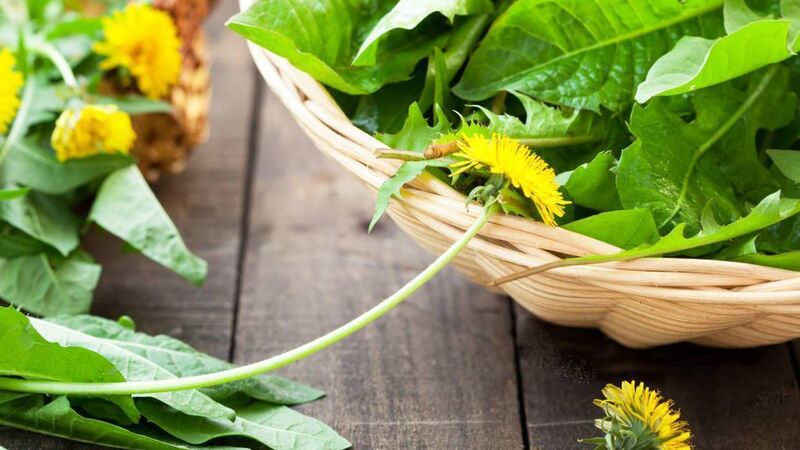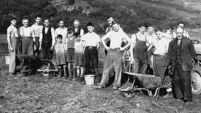John Arnold: The joys on my farm as spring unfolds

The lines ‘ ’ are such a lovely reminder of how this time of year can be.
Lane’s song, of course, is one of exile and sadness and longing for a return to the days of yore.
Well, this year, April so far was like nothing gone before, with glorious sunshine and June-like temperatures and ne’er a drop of rain! Is it global warming or have we just got our summer for this year?
Aw, hopefully not, and no doubt in these coming days and weeks we’ll get some April showers - whether they’ll be soft or not remains to be seen.
For the last ten days, our cows were grazing the High Field by day. From the High Field down to the yard is over half a mile so as the little herd strolled in for milking twice a day, I had plenty of time to take in the surroundings -who’d have thought the shirtsleeves would be rolled up on early April mornings?
These past few warm weeks see them reluctant to leave their pastures, especially while the dew is still on the grass after the dawn.
I suppose the danger of frost will persist for a few more weeks, so planting of flowers and bedding plants is still on hold.
Amazing, then, isn’t it, that nature can produce such an abundance of riotous colour, even at this early stage of the year? Truly, I’ve never seen such an abundance of violets along by the verges of the farm roadway and by the ditches. Yes, ‘they are only a bunch of violets/ a bunch of violets blue/fresh and fair and fragrant/ like diamonds on the dew.
Regarded as a sign of humility and modesty, some cultures looked on the tiny violet as a symbol of grief. Despite this, they have long been associated with innocence and teenage ‘crushes’ - how often did we write in some girl’s Autograph Book?
Those were the days of long ago, but memories of a sweet smile and a peck on the cheek remain still to brighten many a dull moment on a cold, hardy day.
But I digress because, as “the lowing herd wind slowly o’er the lea”, I have plenty of time to take in all around me.
The dawn chorus of wild-bird song is a misnomer really ’cause it continues long after the sun has lifted her face over the hills of East Cork.
We have a rookery near the house and this time of year it’s just hectic with nest-building almost complete. In reality, our crows must be practitioners of a kind of circular economy!
Back in the wet days of December and January, I’d spend many an hour in the Turf House with bundles of light ash branches. With the trusty billhook, I’d chop these branches into short twigs to start the fire. In no time at all there’d be a fine little mountain of kindling ready.
There’s an old saying, ‘If at once you don’t succeed, try and try again’ -well, our crows must be firm believers in the truth of this because day after day they are on our rooftop. With laden beaks of my handiwork, they land on top of the chimney stack trying to build a new nest.
We have an iron mesh type of cap on the chimney. Despite this, the birds manage to poke the little sticks into the chimney and down they come into the fireplace below in the room!
The words of another song come to mind, ‘When will they ever learn?’ -never apparently!
Now, I’m grateful to the crows for sparing us the task of bringing in sticks to light the fire, but enough is enough!
Back to the flowers I see on my twice daily rambles - this is truly the time of the dandelion; O dandelion, rich and haughty, King of village flowers! Each day is coronation time, You have no humble hours. I like to see you bring a troop To beat the blue-grass spears, To scorn the lawn-mower that would be Like fate’s triumphant shears. Your yellow heads are cut away, It seems your reign is o’er.
It’s the King and Queen of village and countryside flowers and the amazing thing is, no matter how often ‘your yellow heads are cut away’, they seem to return overnight.
Long ago, we used to pick copious amounts of young dandelion plants and flowers to feed pullets and young turkeys.
We all remember the great troubadour Danny Doyle singing
And that same little white and yellow flower with a faint tinge of red is another sign of the arrival of spring.
Our High Field hasn’t been ploughed in over 50 years so the daisy abounds there. Making ‘daisy chains’ brings memories of bygone days and long, hot summers when the livin’ was aisy and we were ruled by the sun and moon rather than a clock or a mobile phone.
The daisy takes it’s name from the two words ‘Day’s Eye’, with the little flower opening at dawn and closing at nightfall.
Geoffrey Chaucer is oft remembered for his but he was a real admirer of nature too - an environmentalist before his time;
And as I meander along - ‘how, how, go on there girls, that’s the good cows now, go on now’ - I am conscious of buttercup and the primrose and the sleek and elegant hyacinth all blooming forth. And soon, when the soil warms, the lovely scent of the clover will be wafting up in the Orchard Field and in the Little Iron Gate Field where the blue flowers of the chicory plant will unfold.
As I walk around by the ditch into the Boiler House Field and see all the variety of plants and flowers, I think of what John F Kennedy wrote in 1945 - he said it was GK Chesterton initially said the words ‘Never take down a fence until you find the reason it was put up in the first place’. Wise words well spoken.







 App?
App?







